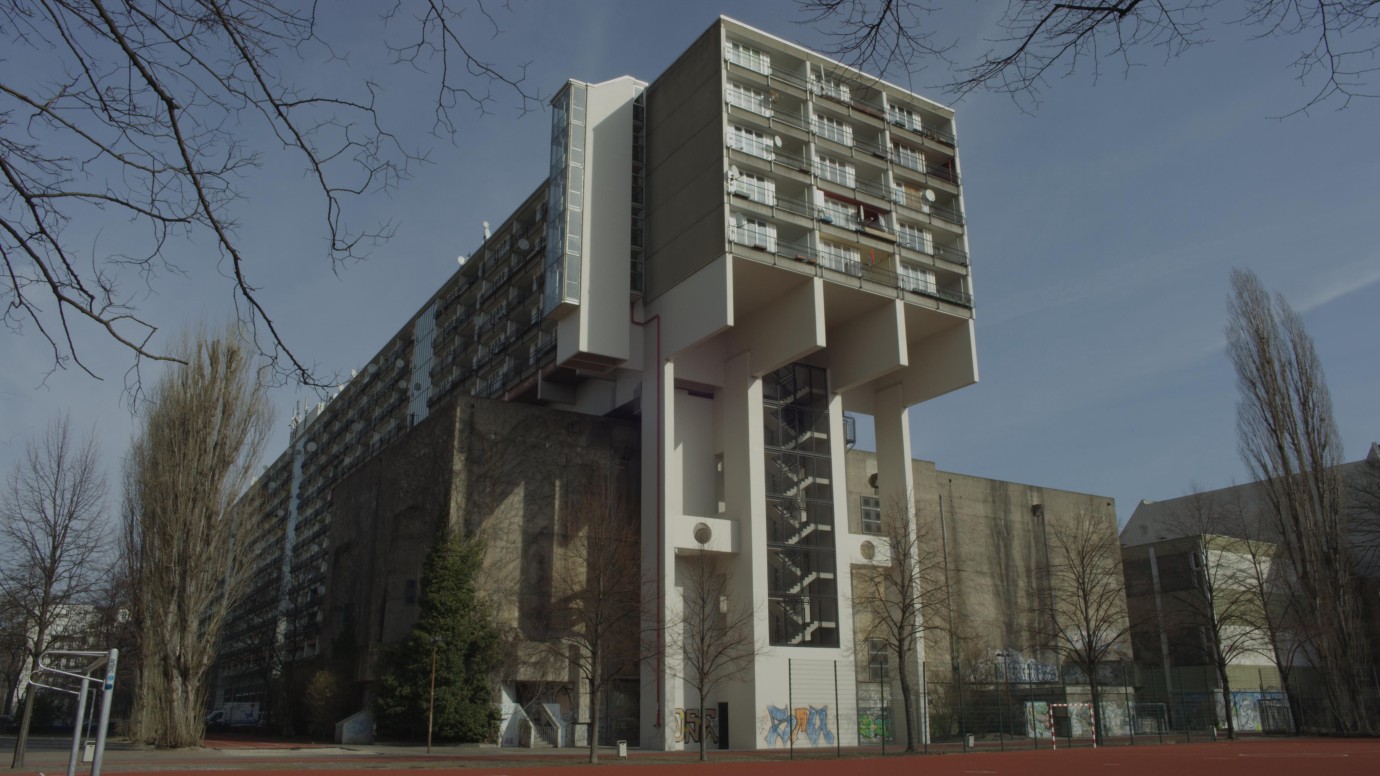Pallasseum – Unsichtbare Stadt
Pallasseum – Invisible City
© Falco Seliger/Filmuniversität Babelsberg

Pallasseum – Unsichtbare Stadt | Pallasseum – Invisible City by Manuel Inacker
DEU 2016, Perspektive Deutsches Kino
© Falco Seliger/Filmuniversität Babelsberg

Pallasseum – Unsichtbare Stadt | Pallasseum – Invisible City by Manuel Inacker
DEU 2016, Perspektive Deutsches Kino
© Falco Seliger/Filmuniversität Babelsberg

Pallasseum – Unsichtbare Stadt | Pallasseum – Invisible City by Manuel Inacker
DEU 2016, Perspektive Deutsches Kino
© Falco Seliger/Filmuniversität Babelsberg

Manuel Inacker
Pallasseum – Unsichtbare Stadt | Pallasseum – Invisible City by Manuel Inacker
DEU 2016, Perspektive Deutsches Kino
A playfully deductive appraisal of the Pallasseum building complex in Berlin Schöneberg, outlining the vision of a calm coexistence of urban living environments. In this twelve-storey concrete block, constructed in 1977 from a design by Jürgen Sawade, there are 514 flats: almost 2,000 people from different nationalities live here. In the Berlin vernacular the building was decried from the outset as the ‘Social Security Palace’. Pallasseum – Invisible City is an attempt to take a closer look – without any preconceptions – at this spatial and social ensemble. The screen is divided into three parts so that it looks like a triptych. Spatial divisions are broken down and merge to form an original cinematic aesthetic. On the one hand, a concentrated mesh of neighbourhoods and echoes emerges, on the other sketches of actual and possible stories take shape. If stories can be seen to form the load-bearing foundation of a place, then places in turn present possible spaces for stories. How are the biographies that are enmeshed here shaped by urban architectural forces, and how do these biographies shape such forces in return?
World Sales
Filmuniversität Babelsberg Konrad Wolf
